Personalising Learning
20 A Note on Personalisation
Personalising Learning
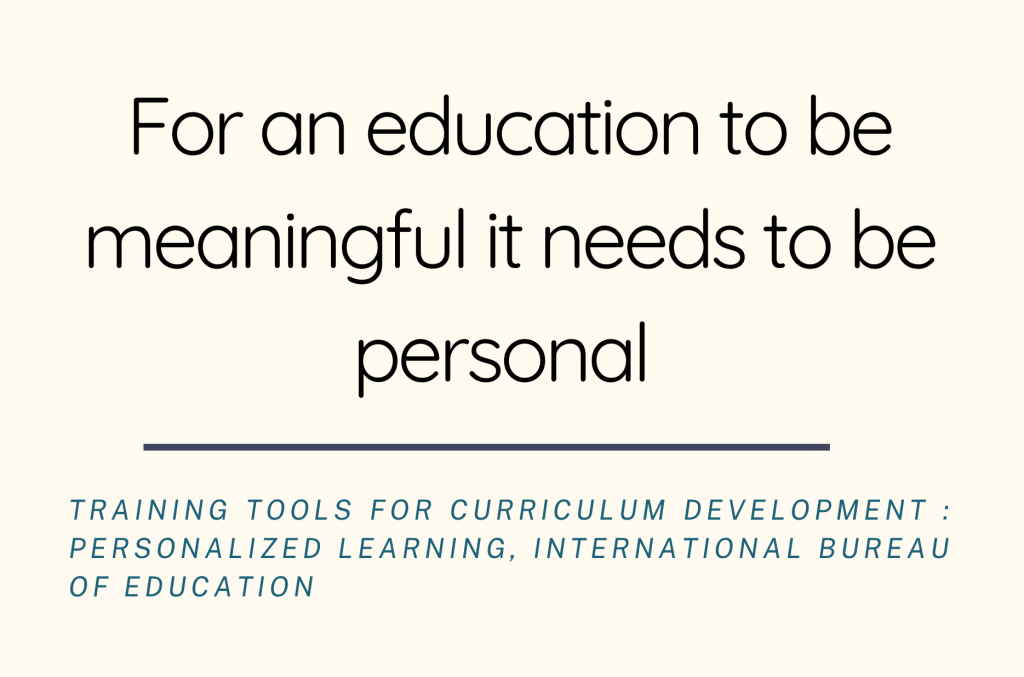 Every teacher personalises learning – if only by adding an additional example or giving individual attention where called for. In a sense, teaching itself is an act of personalisation, as opposed to, say, a televised lesson. Teachers change their lessons so students can make sense of what they learn. They help students to fit the new knowledge or skill with what they already know, their personal observances and social experiences. They help learners make what they can out of what they learn.
Every teacher personalises learning – if only by adding an additional example or giving individual attention where called for. In a sense, teaching itself is an act of personalisation, as opposed to, say, a televised lesson. Teachers change their lessons so students can make sense of what they learn. They help students to fit the new knowledge or skill with what they already know, their personal observances and social experiences. They help learners make what they can out of what they learn.
Personalised learning is about creating different learning environments and experiences for students’ needs, capabilities and cultural contexts1. Of course, the scope and degree of personalisation vary. Experts have identified six dimensions of personalisation – the why, how, what, when, who and where learning takes place2.
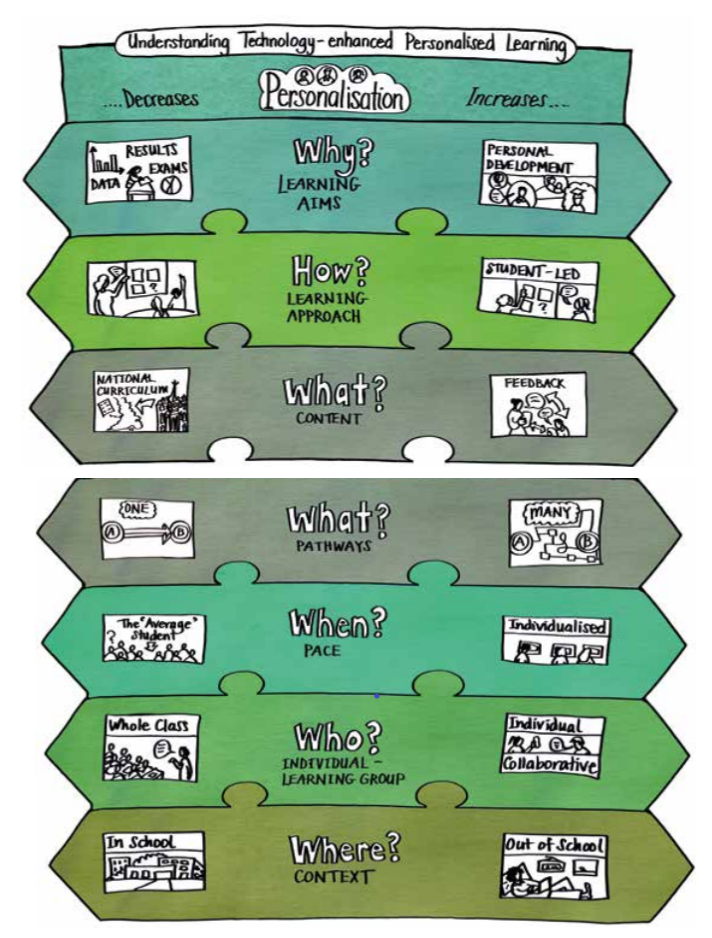
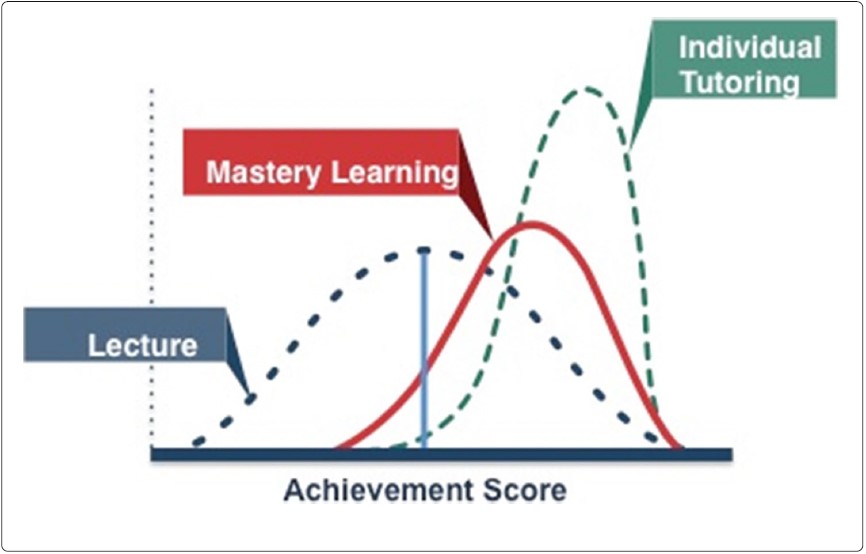
One-to-one tutoring is the epitome of personalisation. In the 1960s, Benjamin Bloom showed that the average student performs better with individual tutoring. He also showed that individual attention closes the learning gap between the high and low scorers. In the real classroom, even with ten students, customising content to benefit each student can demand a lot of effort. True personalisation is practically impossible. Even where the teacher knows a student has gaps in learning they might be unable to remedy it due to time constraints. Thus, the system constantly loses students, even with the best effort of teachers.
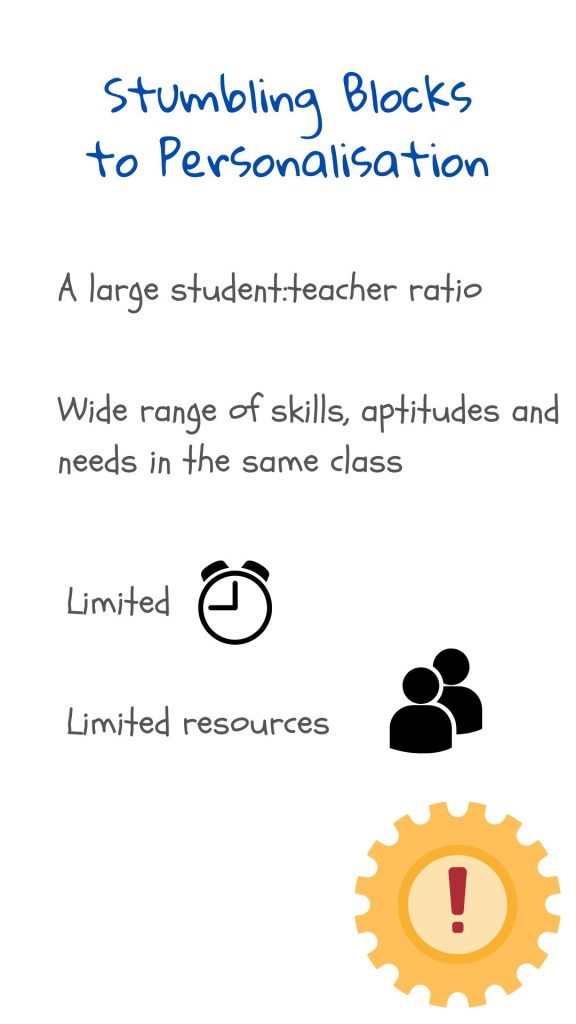
This is where technology can lend a hand.
Technology-enhanced personalised learning
Technology can be used to customise the learning process. Here, technology includes anything from mobile apps and online platforms to stand-alone learning systems2. This is more effective now that artificial intelligence, access to data, mining techniques, cloud computing and affordable hardware have made applications seamless and practical.
Well-designed technology can do more than just help you to overcome the stumbling blocks shown above. When integrated with traditional classes, either as homework or occasional classwork, it could help learners acquire and practice a routine skill. Such technology can increase time spent in the classroom for interaction, personal attention and problem solving. Further, you can monitor what happens during homework – watch how far students have progressed and where they are struggling3.
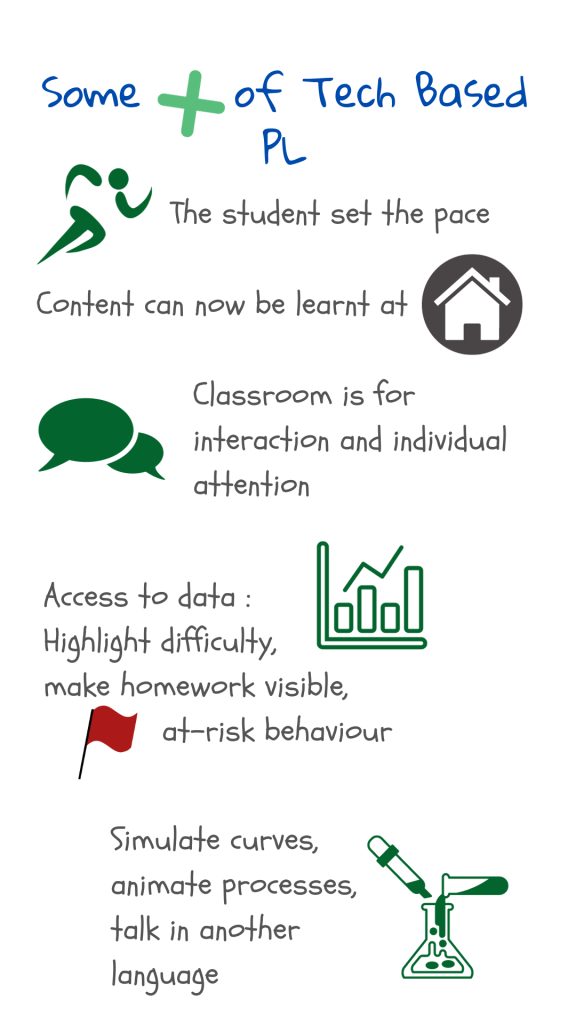
Sometimes, for parts of a lesson, software might do a better job. Think of visualising three dimensions in maths, pronunciation practice in a language class – or an animation explaining the processes inside a human cell.
All AI solutions for education can be used to different degrees to help personalise learning. In this chapter, we discuss the use of adaptive learning systems.
1 Groff, J., Personalized Learning: The State of the Field & Future Directions, Center for Curriculum Redesign, 2017.
2 Holmes, W., Anastopoulou, S., Schaumburg, H & Mavrikis, M., Technology-enhanced personalised learning: untangling the evidence, Stuttgart: Robert Bosch Stiftung, 2018.
3 Feldstein, M., Hill, P., Personalized Learning: What It Really Is and Why It Really Matters, Educause Review, 2016.
4 Taylor, D., Yeung, M., Bashet, A.Z., Personalized and Adaptive Learning, Innovative Learning Environments in STEM Higher Education pp 17–34, Springer Briefs in Statistics, 2021.
